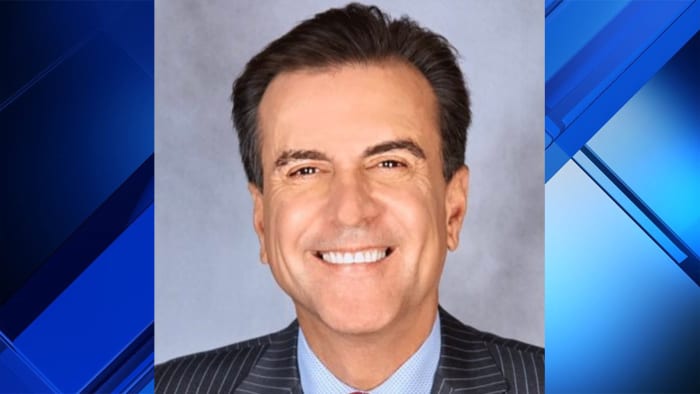This article is part of FT Globetrotter’s guide to Miami
I was born and raised in South Florida, which carries a lot of cachet in this city of transients, visitors from everywhere and multi-ethnic languages, flavours, sounds and cultures. This town is so much bigger than the Miami I grew up in. We ate a lot of Cuban food, which was the primary Latin- American cuisine represented in Miami at the time, as well as my mother’s Argentine/American-Jewish recipes. But today you can taste it all here. We were always known for having some of the best Cuban food and drink in the country (I believe we still reign supreme) but with the influx of so many Venezuelans, Colombians, Nicaraguans and so on, we now have so many choices, and they are just as delicious and as vibrant as the people.
Here are just a few of my favourite Latin American places. Some I grew up enjoying, while others are more recent.
Puerto Sagua
700 Collins Avenue, Miami Beach, FL 33139
One of the city’s oldest and most traditional Cuban restaurants happens to be on South Beach. For me, Puerto Sagua’s food has always been something that vuelve a la vida (brings you back to life). Everything is delicious, affordable and you never know who might be sitting at the counter sipping on a café con leche or digging into the ropa vieja (beef and tomato stew). It’s old school, and I love that it doesn’t change (aesthetically or deliciously). I always get the fish soup; they specialise in seafood, but you can’t really go wrong. Stick to the classics as they are the best. puertosagua.org; Directions
Wolf of Tacos
locations around Miami


The only place on my list that is not a bricks-and-mortar restaurant, but this pop-up is so good I felt it was a must. The wolf, chef Eduardo Lara, is so very talented. His tacos and salsas make me and my husband and business partner, David, swoon. David is from Oaxaca in Mexico, and he is not easy to please when it comes to tacos — it’s his favourite dish. Come ready to stand in line (it moves quickly) and, if Eduardo is making it, be sure to get the gaonera, with melting cheese and thinly sliced beef filet (though anything else he’s making that day will be outstanding). He and his business partner Pablo Reyes are always there, and they give great attention to service, even though you’re outside eating on paper. Follow them to know where they will be @wolfoftacos. thewolfoftacos.com
Madroño
10780 West Flagler Street, Miami, FL 33174
Just thinking about Madroño makes my mouth water. It’s a clean and bright little family-owned Nicaraguan restaurant that is so unassuming you will be surprised at the colours and flavours that come out of the kitchen. Everything is so fresh and well prepared. I recommend ordering the repocheta, a tortilla filled with cheese and melted on the plancha, topped with my absolute favourite kind of shredded pickled-cabbage slaw, which is used on a lot of Nicaraguan dishes. I go for the meat dishes because they are so flavourful and fun, and you can’t beat the prices. Have a sangria with your meal and a flan before you leave. madronorestaurant.com; Directions
La Camaronera
1952 West Flagler Street, Miami, FL 33135


I’ve been going to this no-frills Cuban seafood restaurant since I was about five years old. It’s the type of place where you see everyone from truck drivers and families to people in suits having business meetings. It serves its own catch, including stone crab and other seafood and fish of the day, but go for the crispy shrimp with delicate Cuban spices or the minuta sandwich (a tiny, whole but totally boneless and butterflied fried snapper on Cuban bread with onions, ketchup and mayo) — it’s heaven on earth. The owners, the Garcia family, changed the decor a few years ago, adding tables and chairs to the stand-up-only bar I grew up at. But none of the recipes have changed, and the owners are the children of the original founders. It’s all in the family! lacamaronera.com; Directions
Bandeja Paisa
9511 West Flagler Street, Miami, FL 33174
This family-owned Colombian restaurant has been around for about 15 years. The servers treat their customers like family and help you order — and there’s always a lot of food on each plate. Just wait until you receive your bandeja paisa. The platters of steaks, chicharrónes, chorizos, rice, egg, tostones, avocado . . . there’s more, and it’s all delicious.
Paisa is bustling — it’s always busy, always tasty. Be ready for bright lights from games on the television, loud music or just a lot of people, and it’s all worth it. The ajiaco (not your typical chicken soup) is always one of my favourites. Order more than you can eat and take it home to feast on over the next few days. bandejapaisa.com; Directions
Salmon & Salmon
2907 North-West 7th Street, Miami, FL 33125


Small, family-owned and refined, Salmon & Salmon is one of my favourite Peruvian restaurants in Miami. What I love about it is that if you ask a local Peruvian where to get great ceviche or lomo saltado (a creole Chinese-Peruvian dish with steak, fries and tons of flavour), this is the place they will always recommend. My favourites include any ceviche they serve, though the mixto (mixed ceviche with seafood and fish) and the chicha morada (purple-corn juice) are not to be missed. Nor are the sudado (poached fish in the most amazing broth with rice) or the seafood, which is served crunchy and fried — somehow greaseless but tasty. And the service is the best. instagram.com/salmonsalmonmiami; Directions
Michelle Bernstein is a James Beard award-winning chef and restaurateur from Miami. Her new restaurant, Sra. Martinez, opens this winter in Coral Gables
What are your favourite Latin-American restaurants in Miami? Tell us in the comments below. And follow FT Globetrotter on Instagram at @FTGlobetrotter
Cities with the FT

FT Globetrotter, our insider guides to some of the world’s greatest cities, offers expert advice on eating and drinking, exercise, art and culture — and much more
Find us in Miami, New York, Paris, Rome, London, Tokyo, Frankfurt, Singapore, Hong Kong, Toronto, Madrid, Melbourne, Copenhagen, Zürich, Milan, Vancouver, Edinburgh and Venice






































/cdn.vox-cdn.com/uploads/chorus_asset/file/25739950/247386_Elon_Musk_Open_AI_CVirginia.jpg)